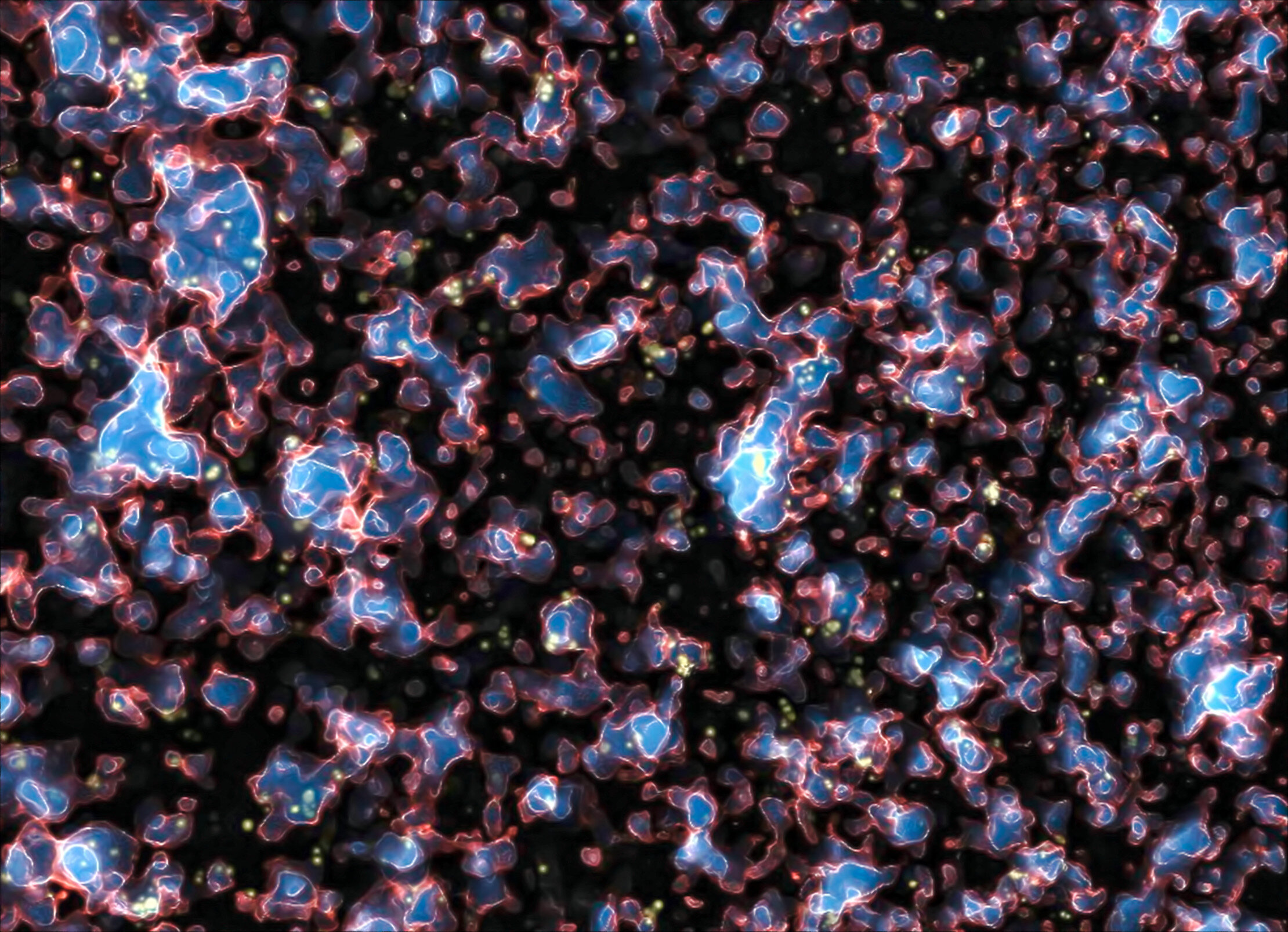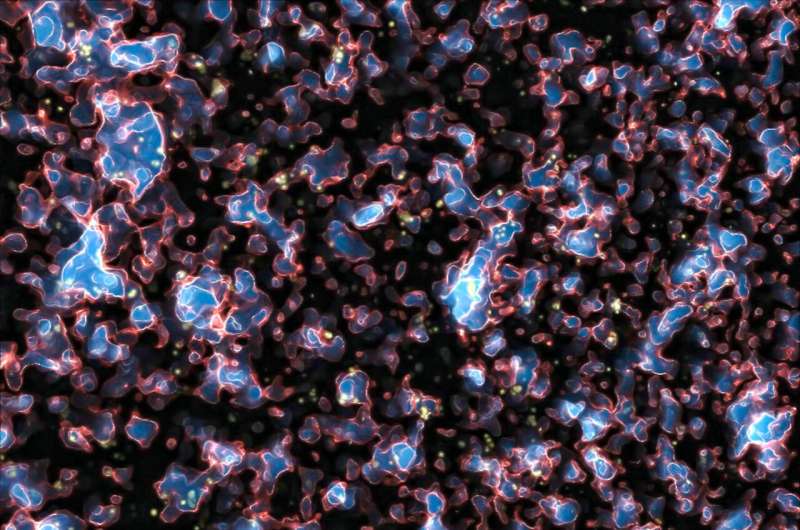

Reionization is a critical period when the first stars and galaxies changed the physical structure of their surroundings, and eventually the entire universe. Established theories state that this epoch ended around 1 billion years after the Big Bang. However, if calculating this milestone using observations from the James Webb Space Telescope (JWST), reionization would have ended at least 350 million years earlier than expected. That’s according to a new paper published in Monthly Notices of the Royal Astronomical Society: Letters.
Throughout its history, the universe has undergone several major changes. For the first 380,000 years after the Big Bang, it was a hot, dense plasma of protons and electrons. Eventually, things cooled enough for those protons and electrons to combine and form neutral hydrogen atoms. Then, around 100 million years after the Big Bang, the first stars and galaxies began to form, ushering in the epoch of reionization.
Those first stars were enormous and hot—some predicted to be 30 to 300 times as massive as our sun—and they emitted a lot of energy in the form of extreme ultraviolet light. This energy was so intense that when it struck nearby hydrogen atoms, it split them into protons and electrons in a process called ionization. After hundreds of millions of years, when almost all hydrogen in the universe became ionized, the epoch of reionization ended.
Considering roughly 75% of all matter is hydrogen, this represents an immense transformation. “This is the last major change to happen,” explained Julian Muñoz, assistant professor of astronomy at The University of Texas at Austin and lead author on the paper. “You went from neutral and cold and boring to ionized and hot. And this isn’t something that only happened to one or two galaxies. It happened to the whole universe.”
“The process heated and ionized gas in the universe, which regulated how fast galaxies grew and evolved,” added John Chisholm, assistant professor of astronomy at UT Austin and a co-author on the paper. “These early stars established the overall structure of galaxies in the universe.”
Because astronomers are unable to observe the reionization process directly, they must use models to predict when it ended. These models are based on indirect evidence, including measurements of how much light has reached us from the afterglow of the Big Bang, called the Cosmic Microwave Background.
Other evidence is an early abundance of the wavelength associated with energy changes in hydrogen, called the Lyman-alpha Forest. Both of these help astronomers calculate how much hydrogen was transformed during reionization, and by extension how much energy was needed to do that.
“It’s an accounting game,” said Muñoz. “We know that all hydrogen was neutral before reionization. From there, you need enough extreme ultraviolet to split each atom. So, at the end of the day, you can do the math to figure out when reionization ended.”
Now, the James Webb Space Telescope is challenging established models. With it, astronomers can peer further into the cosmos than ever before, deep into this critical epoch. This is leading to many unexpected observations in the early universe—one of which is a greater abundance of extreme ultraviolet-emitting galaxies than expected. “JWST has revealed that bright galaxies are enough to ionize the universe by themselves,” said Chisholm. “This is counter to what many people anticipated.”
So, with these new observations, the accounting is now off. “If you were to trust James Webb blindly, it would tell you that reionization ended 550 million to 650 million years after the Big Bang, instead of current estimates of 1 billion years,” explained Muñoz. “If this were true, the Cosmic Microwave Background would look different, and the Lyman-alpha Forest would look different. So, there’s a tension.”
In other words, it’s unlikely that reionization happened hundreds of millions of years earlier than predicted. So, what’s going on? One explanation could be that established models are missing some key information. For example, sometimes ionized protons and electrons would come back together to re-form neutral hydrogen atoms. This process is called recombination. If it happened more often than current models assume, that could increase how much extreme ultraviolet light was needed to ionize the entire universe.
“We need more detailed and deeper observations of galaxies, and a better understanding of the recombination process,” said Munoz. “Resolving this tension on reionization is a key step to finally understanding this pivotal period. I am excited to see what the coming years hold.”
Additional study authors are Jordan Mirocha at NASA’s Jet Propulsion Laboratory and the California Institute of Technology; Steven Furlanetto at the University of California, Los Angeles; and Charlotte Mason at the University of Copenhagen.
More information:
Julian B Muñoz et al, Reionization after JWST: a photon budget crisis?, Monthly Notices of the Royal Astronomical Society: Letters (2024). DOI: 10.1093/mnrasl/slae086
Provided by
University of Texas at Austin
Citation:
Astronomers find Webb data conflict with reionization models (2024, October 10)
retrieved 10 October 2024
from https://phys.org/news/2024-10-astronomers-webb-conflict-reionization.html
This document is subject to copyright. Apart from any fair dealing for the purpose of private study or research, no
part may be reproduced without the written permission. The content is provided for information purposes only.